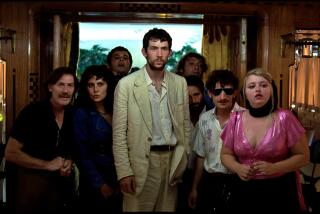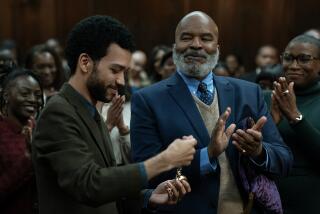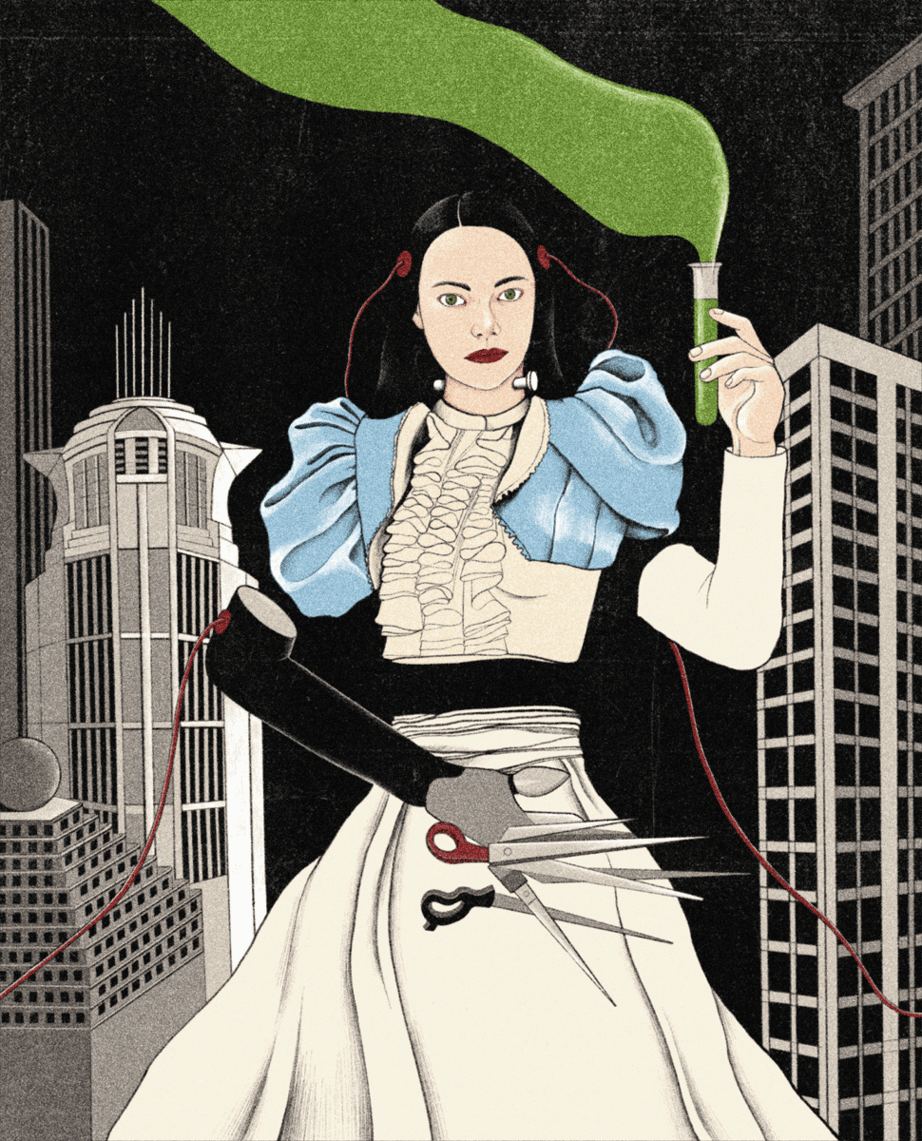Review: Ava DuVernay puts a fantastically trippy spin on the messy, moving ‘A Wrinkle in Time’
Near the end of Madeleine L’Engle’s “A Wrinkle in Time,” a character compares life to a sonnet — a work governed by strict patterns of rhyme and rhythm, but one that allows for complete creative freedom within those limitations. “You’re given the form, but you have to write the sonnet yourself,” she says. “What you say is entirely up to you.”
L’Engle knew of what she spoke. Within the ostensibly exacting parameters of children’s literature, she spun a thrillingly strange and intellectually capacious adventure story, replete with elements of fantasy and science fiction, interdimensional travel and quantum physics, secular philosophy and Christian parable. It was rejected by at least 26 publishers and went on to be banned by more than a few school libraries, all in futile opposition to the millions of voracious readers worldwide who have since claimed L’Engle’s book as a touchstone.
Now that touchstone, already filmed for television in 2003, has become a much-anticipated Disney event movie. And in this particular cinematic sonnet, adapted for the screen by writers Jennifer Lee (“Frozen”) and Jeff Stockwell (“Bridge to Terabithia”), the director Ava DuVernay has shown an admirable willingness to rearrange and even color outside the lines.
By turns gorgeous, propulsive and feverishly overwrought, “A Wrinkle in Time” is an otherworldly glitter explosion of a movie, the kind of picture that wears its heart on its tie-dyed sleeve. It’s the product of a big, unwieldy and excitingly go-for-broke vision, one etched in bright hues and kaleidoscopic visual effects, in busy musical orchestrations and original pop songs from artists like Sade, Sia and Demi Lovato. Most of all, that vision finds expression in the faces of a diverse ensemble overshadowed, quite literally, by a mega-sized Oprah Winfrey, perfectly if almost redundantly cast as a benevolent deity.
The sheer exuberance of this movie can provoke more than a few seemingly discordant reactions, sometimes in the same instance. Whisked alongside the characters through one space-time wormhole after another, I found myself wishing that this “Wrinkle” were more focused, more disciplined — that its ceaseless flow of fantastical images cohered into a revelatory new application of L’Engle’s themes and insights, rather than an earnest, sometimes awkward reiteration of them.
But if not all the film’s visual gambits and expository shortcuts pay off, they nonetheless turn out to be in service of a uniquely daring and adventurous sort of cinematic translation. L’Engle’s story is the kind of intricate, whimsical narrative contraption that tends to get described as “unfilmable,” a judgment that the filmmakers have defied in imperfect but cumulatively astonishing fashion.

Oprah Winfrey, Reese Witherspoon and others star in the trailer for “A Wrinkle in Time.”
In both her prior capacity as a publicist and her present calling as a feature filmmaker, DuVernay has been a tireless champion of inclusiveness, as both a force for good in the movie industry and a necessary agent of historical change. She turns filmmaking into an act of cultural reclamation, never more rousingly than in “Selma” (2014), her dramatic snapshot of the civil rights movement, and “13th” (2016), her documentary about the mass incarceration of African Americans.
With “A Wrinkle in Time,” DuVernay has found an entirely different but no less accommodating vessel for her brand of advocacy. This is the first picture with a nine-digit budget ever directed by a woman of color, a milestone that feels entirely appropriate to the legacy of L’Engle’s novel, which did its part to subvert ’60s-era gender and genre expectations by centering on Meg Murry, a smart, self-doubting 14-year-old girl with an aptitude for advanced mathematics.
In going a step further and imagining Meg as a biracial black girl (played by the gifted Storm Reid), DuVernay has not complicated a classic heroine’s identity so much as turned it, with deceptive casualness, on its head. It’s a welcome experiment in multiplex multiculturalism that feels at once incidental and charged with significance, and it dovetails intuitively with the principled rejection of conformity that lies at the heart of L’Engle’s story.
As in the book, it’s a dark and stormy night when misfit Meg, her intellectually gifted younger brother, Charles Wallace (Deric McCabe), and their scientist mother (Gugu Mbatha-Raw) receive a fateful visit from an eccentric celestial guardian named Mrs. Whatsit (a vivacious Reese Witherspoon). She has come to warn the Murry children about the whereabouts of their father (Chris Pine), also a scientist, who left on a dangerous mission years ago, and whose disappearance has since been the source of much local gossip.
L’Engle’s story is the kind of intricate, whimsical narrative contraption that tends to get described as ‘unfilmable.’
Mrs. Whatsit’s partner in supernatural mischief is Mrs. Who (Mindy Kaling), whose every line of dialogue draws on a pan-cultural archive of famous quotations from writers as different as Shakespeare, Kahlil Gibran and Outkast. And then there is Mrs. Which, the oldest, wisest and most physically imposing of this benevolent trinity, played by Winfrey with all manner of elaborate headdresses and facial adornments. (Dazzling as these three women’s many costume changes are, they can’t quite do justice to the mysterious, mercurial identities that L’Engle gave them on the page.)
The missuses have the power to harness a “tesseract,” which is not a device imported from the Marvel Cinematic Universe, but rather a fifth-dimensional force that enables people to zip across galaxies in no time. And so, accompanied by their friendly schoolmate Calvin (Levi Miller), Meg and Charles Wallace go on an eye-popping, planet-hopping adventure, landing first on a lush, rolling landscape whose hallucinatory colors and giant flowers bring “Avatar’s” Pandora to mind, and then in a mountainside cavern where an oracle known as the Happy Medium (Zach Galifianakis) provides some essential guidance.
In time the kids arrive on Camazotz, a chillingly Orwellian planet whose inhabitants are controlled by a single, computer-like brain called IT. Some of the director’s most inspired set-pieces come to the fore here, notably an insidious mind-control sequence (featuring a fine, sinister Michael Peña) that unfolds on a crowded beach.
Although L’Engle used these passages to worm deeper into her characters’ heads, the movie remains a resolutely exterior experience — full of mind-bending effects and lightning-quick shifts in scenery, but unable to match its source material’s rigorous coherence or its remarkable level of sensory and cognitive detail.
What DuVernay’s film offers instead, and it’s no small thing, is a gloriously unapologetic trippiness, a hallucinatory quality that is only amplified by the sheer velocity of the storytelling. At times you wish the movie would slow down and let us catch our breath, to allow us to feel immersed in these far-flung realms rather than tossed from one to the next.
But there’s urgency in all this dynamism, and real feeling as well. In every swirling frame you can sense a filmmaker’s desire to lose herself and her audience in the material, to find a cinematic syntax that will give fresh, vibrant expression to a well-loved story.
Sincerity alone doesn’t make a film worth seeing, but the sincerity of “A Wrinkle in Time” is very much something to see. No less than the novel, this fearlessly emotional picture builds to a bracing, unapologetically sentimental celebration of the power of love. And it’s here, in her focus on family bonds strong enough to span light years, that DuVernay finds her way fully onto L’Engle’s wavelength. She has made a movie that believes fervently that a young girl’s imagination can change, challenge and even save the world. I went in believing as much myself, but walking out, I believed it a little bit more.
------------
‘A Wrinkle in Time’
Rating: PG, for thematic elements and some peril
Running time: 2 hours
Playing: In general release
justin.chang@latimes.com | Twitter: @JustinCChang
More to Read
Only good movies
Get the Indie Focus newsletter, Mark Olsen's weekly guide to the world of cinema.
You may occasionally receive promotional content from the Los Angeles Times.







